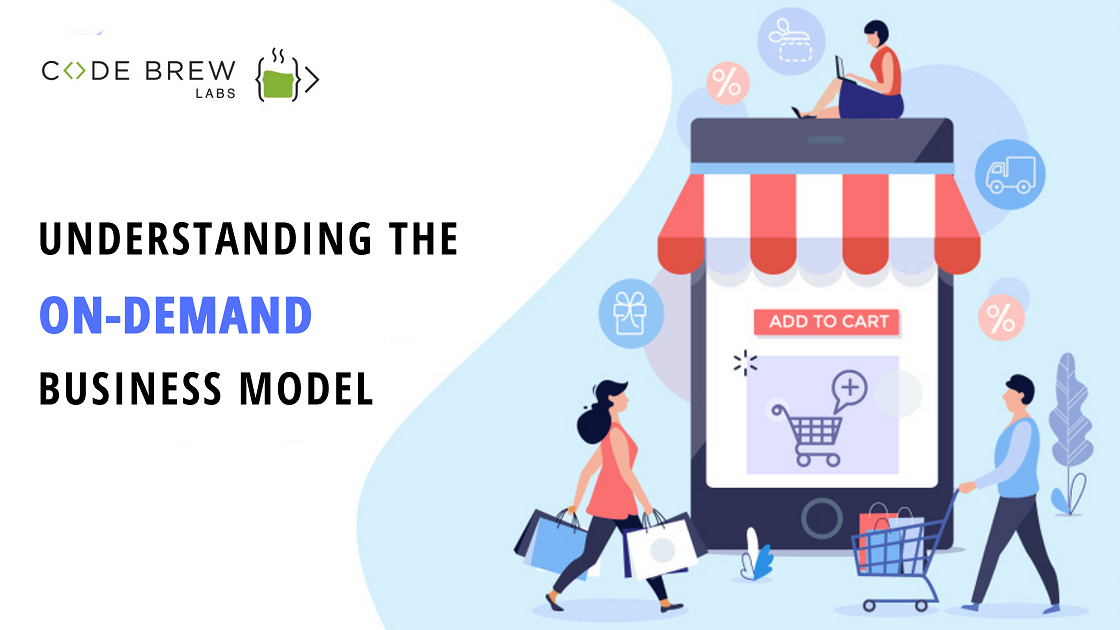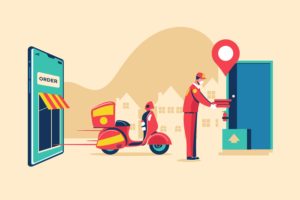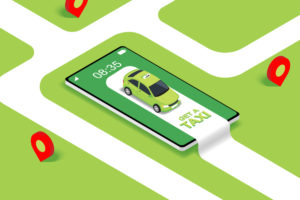
With its timeliness, quality, and accessibility, the on-demand business model has swiftly become the first-choice option for both aspiring entrepreneurs and seasoned company owners wanting to go online.
Table of Content
Today, omnichannel presence is more important than ever since. It not only offers income from all sources but also allows cross-channel sales, which is where most on demand business models demonstrate their USP.
A dynamic economy produces ever-changing patterns. On demand solutions, with a whopping $57billion market presence, provide rapid satisfaction to customer expectations. Because an on-demand approach gives an omnichannel presence and encourages cross-channel purchases, it increases income for organisations.
We will explore what an on demand food delivery business model is, how it has taken the industry by storm, and what is the current state of the on demand economy.
When we think of an on demand business, the first thing that comes to our mind is Uber. As the name suggests, on demand means providing services to the consumers when they want them. An on-demand business strives to provide rapid delivery of products and services to its customers’ doorsteps.
The on-demand economy is based on speed and simplicity of use, which makes it attractive in a world where we want fast answers to everything. Seeing the potential of the on demand market, many businesses are opting for solutions to deliver services to their customers in real-time. Many of these on demand services are offered digitally, giving users the ease to get anything anytime.
Some of the successful on demand solutions that are conquering the eCommerce marketplace are:
Food delivery apps have changed the way we consume food. They have reimagined the ease of obtaining meals — they save time, are fast, and just take a few phone clicks. Some of the famous food delivery apps are Zomato, Swiggy, Grubhub, and many others. You can also get an on demand food delivery application with an excellent business model. Click here to know more!

On-demand logistics apps like FedEx make deliveries easier. They operate by carrying items on the same day or earlier with a few speed bumps as possible. According to GlobeNewswire, the on-demand logistics business will be worth $75 billion by 2030!
Switching to an on-demand logistics approach saves time and money while allowing customers to follow their delivery in real-time.
On demand services like salons, home services, etc. have become so accessible and easy due to these applications. They aim to offer a small and integrated solution that serves as a one-stop shop for the hyperlocal requirements of consumers. One of the famous on demand service providers is UrbanCompany.
Also, read – Guide To Create On Demand Home Services App

On-demand delivery model, like the logistics industry, has reinvented old delivery methods. An on-demand business model for delivery makes the most use of time and resources available to guarantee that goods arrive at their destination in record time. One of the best examples for this model is Postmates and we can help you to get an on demand application that functions similar to Postmates.
Missing appointments or flights is common if you do not possess a vehicle. It was not unusual to see people by the roadside with waving hands and worried expressions, looking for a cab to pick them up. On-demand transportation services such as taxi dispatch software have permanently altered the way we travel. Such taxi solutions have changed the way we travel; cabs and taxis are now only a stone’s throw away.

With the increasing demand for these applications in the on demand economy, many businesses are set to adapt on demand business models. Here are some reasons why they will be successful for startups
In the early stages of the digital revolution, on demand service business models came through websites. After the introduction of smartphones, the on demand business industry grew massively. Booking a cab using an on-demand transportation services app is a common job that people of all ages are familiar with these days.
Hence, the users who were dependent on the website are moving towards mobile app development. It is easier for them as they can simply download it and get the required services within a few clicks.
It is not news that several applications operate in the same marketplace but getting smart on demand business model, helps you gain a competitive edge. The success faced by this industry has resulted in an increase in quality, better customer service, speed and other values.
The benefit gives additional motivation for today’s young to apply their ideas to further streamline the process and run their companies in a highly effective manner.

Big companies in the startup sector with plenty of cash would be eager to ride the wave of growth that the on-demand market has demonstrated over the years. They would like to capitalise on the drastic shift in customer behaviour.
As a result, it stands to reason that they would be prepared to invest millions in disrupting even more sectors while simultaneously focusing on international expansion.
People are loyal to the applications that offer the best user experience. This is given a rise to various innovators who are continuously trying to meet the demands of the users and explore new insights.
This process continuously seeks to update the existing systems and led to the rise in a lot of competition in the market. This also indicates that the need for on demand business models is never going out of date.
There are a lot of statistics to prove that the on demand economy is prospering and there are various sectors of the on demand business models that determine the potential growth. The advantage that the on demand market has to give to industry stakeholders may be assessed on two fronts: revenue and investor interest.
With increased revenue from the on demand service business models, what was once a niche fad is now popular. The increasing chart of revenue is making a frequent presence in the on-demand player’s Profit and Loss Statement, and it is not only the domain that is experiencing excellent statistics in terms of revenue and profit.
This increase in income may be ascribed to a variety of causes, including the ease with which users interact with on demand apps or that the on demand business has emerged as the excellent working economy for youth. Click here to know how you can make quick money with an on demand business.
PwC has confirmed the notion that the increased revenue amount that is now popular in the on-demand mobile application startup marketplace would only strengthen further. In accordance with PwC analysis, the on-demand economy’s income will increase from $14 billion in 2014 to $335 billion by 2025.
Startups with excellent on demand business models like Uber, Airbnb, etc. which contribute to the on demand economy, have become famous for the funds they get from the investors to grow their resources. The on demand market is the same one that investors are vying for a piece of.
A match that contains an increased investment for on-demand companies. There are a significant number of investors who were unable to participate in the trend when the Uber economy was in its early stages but are now ready to book their profits.
The fundraising rounds for on-demand businesses began in 2014 with $74 billion and have reached $10,293 billion in the fourth quarter of the year 2017. And, if you look at the specifics of the financing rounds in the on-demand economy data, you will notice that the majority of the investment has come from seed or angel investors.

On-demand solutions will continue to dominate in the next few years, as the pursuit of convenience and accessibility does not appear to be abating. Consumer expectations and trends will rise as technology advances.
The on-demand business strategy focuses on providing answers to consumers in real-time, which has always been a natural consumer desire. Having everything delivered to your home at any time of day or night feels like magic and offers customers a sense of empowerment.
The future of on-demand solutions is bright, as fresh technology advancements improve customer experience. The usage of AI and seamless UIs has changed the way we buy and trade. As we have grown more reliant on solutions that provide rapid pleasure, on-demand business models have advanced even further.
Let us help you grow your business by developing an on demand business solution for you. Send us your business idea and leave the rest to us!
